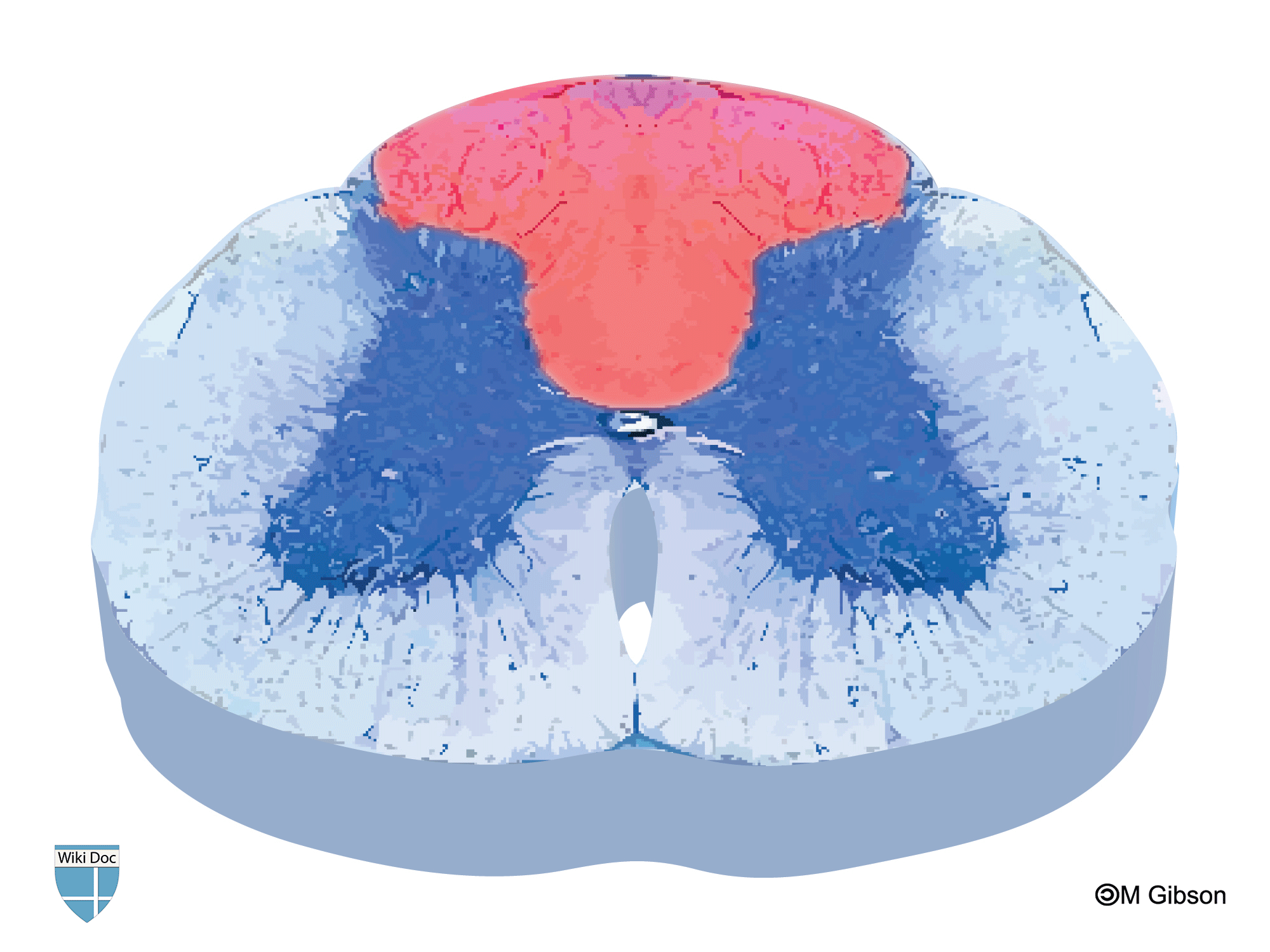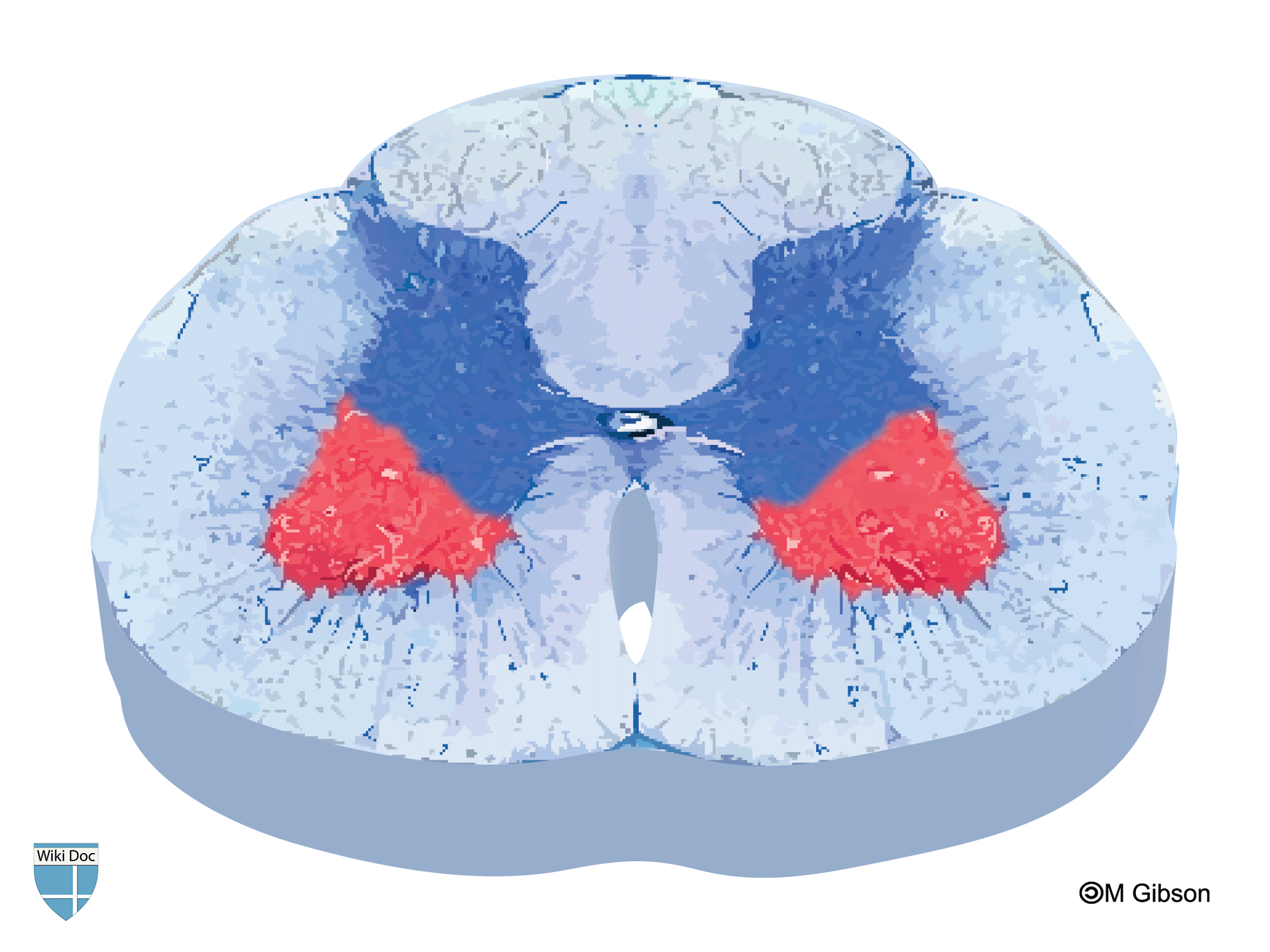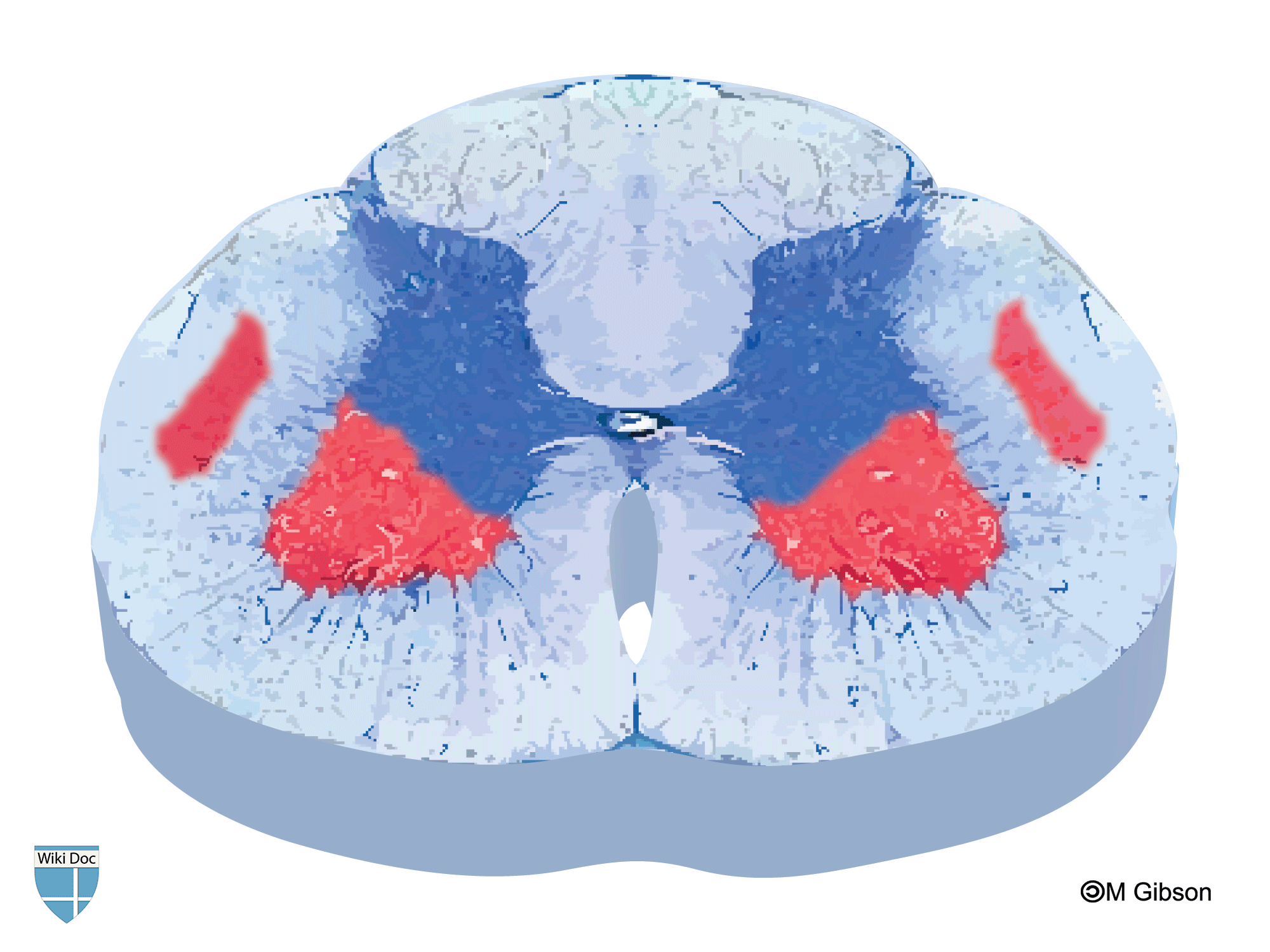WBR0571
| Author | [[PageAuthor::Rim Halaby, M.D. [1]]] |
|---|---|
| Exam Type | ExamType::USMLE Step 1 |
| Main Category | MainCategory::Pathophysiology |
| Sub Category | SubCategory::Neurology |
| Prompt | [[Prompt::A 19-year-old female patient presents for acute right arm weakness. The patient woke in the morning and felt that her right arm is heavy and numb and she could not lift it. The patient denies any history of trauma to her arm or previous similar symptoms. Upon further questioning, past medical history reveals an episode of acute vision loss in her right eye that resolved spontaneously almost one year ago. Neurological examination reveals decreased sensation and motor strength in the right arm in addition to loss of sense of vibration in the left lower leg. Which of the following images depicting spinal cord lesions in red represents the site of the neurological lesion of the patient?]] |
| Answer A | [[AnswerA:: ]] ]]
|
| Answer A Explanation | [[AnswerAExp::This image is depicts an expanding central canal compressing adjacent tracts typically seen in syringomyelia. The anterior white commissure is the closest structure which leads to compression of the decussating spinothalamic tracts first. Multiple sclerosis is not associated with lesions in the grey matter.]] |
| Answer B | [[AnswerB:: ]] ]]
|
| Answer B Explanation | [[AnswerBExp::This image depicts asymmetric lesions in the white matter, which is characteristic of multiple sclerosis.]] |
| Answer C | [[AnswerC:: ]] ]]
|
| Answer C Explanation | [[AnswerCExp::This image depicts the involvement of the dorsal columns of the spinal cord that house the ascending proprioception and vibration sense pathways classically seen in tabes dorsalis. The dorsal columns are also be involved in other syndromes including subacute combined degeneration seen with Vitamin B12 and Vitamin E deficiency.]] |
| Answer D | [[AnswerD:: ]] ]]
|
| Answer D Explanation | [[AnswerDExp::This image depicts isolated anterior horn injury usually seen in patients with poliomyelitis or Werdnig-Hoffman Syndrome (Floppy Baby Syndrome). Both of these diseases only cause LMN signs due to the lack of involvement of descending motor tracts.]] |
| Answer E | [[AnswerE:: ]] ]]
|
| Answer E Explanation | [[AnswerEExp::This image depicts lesions in the white matter and grey matter. This pattern of lesions is found in ALS which presents with upper motor neurons and lower motor neurons symptoms. Lesions involving both the white matter and grey matter is not characteristic of multiple sclerosis.]] |
| Right Answer | RightAnswer::B |
| Explanation | [[Explanation::The patient is presenting for acute motor and sensation loss in the right arm in the context of a previous history of acute unilateral vision loss. The current presentation, previous history and the findings on physical exam suggest a patchy involvement of neurological sites with temporal separation, which suggests a diagnosis of multiple sclerosis. Educational Objective: Multiple sclerosis is characterized by patchy lesion of the white matter in the central nervous system. |
| Approved | Approved::Yes |
| Keyword | WBRKeyword::Spinal cord, WBRKeyword::Multiple sclerosis, WBRKeyword::Autoimmune, WBRKeyword::Neurodegenerative, WBRKeyword::Neurodegeneration |
| Linked Question | Linked:: |
| Order in Linked Questions | LinkedOrder:: |